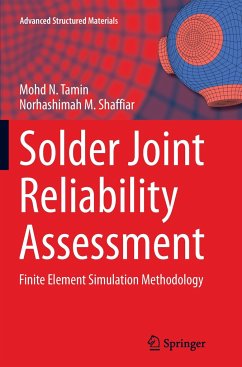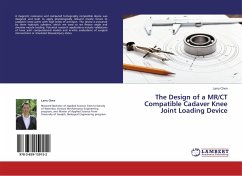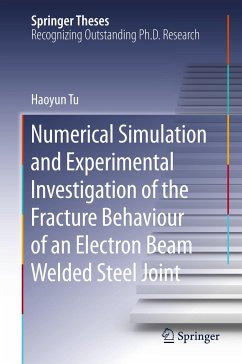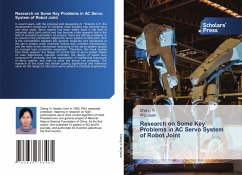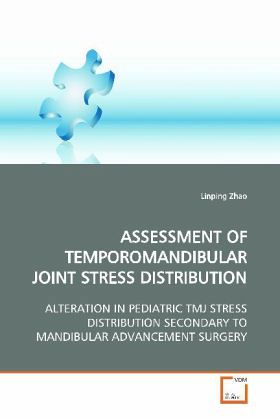
ASSESSMENT OF TEMPOROMANDIBULAR JOINT STRESS DISTRIBUTION
ALTERATION IN PEDIATRIC TMJ STRESS DISTRIBUTION SECONDARY TO MANDIBULAR ADVANCEMENT SURGERY
Versandkostenfrei!
Versandfertig in 6-10 Tagen
52,99 €
inkl. MwSt.

PAYBACK Punkte
26 °P sammeln!
Approximately 1.1 million individuals in US have severe maxillofacial skeletal deformity of developmental origin and need surgical correction. Current surgical planning systems can provide prediction on the anatomical restoration but not functional improvement. The present study intended to integrate a patient-specific finite element analysis into the surgical planning stage and provide predictions on the functional improvement based upon the biomechanical response of the stomatognathic system. The specific aim was to verify the hypothesis that the mandible advancement reduces the contact pres...
Approximately 1.1 million individuals in US have
severe maxillofacial skeletal deformity of
developmental origin and need surgical correction.
Current surgical planning systems can provide
prediction on the anatomical restoration but not
functional improvement. The present study intended
to integrate a patient-specific finite element
analysis into the surgical planning stage and
provide predictions on the functional improvement
based upon the biomechanical response of the
stomatognathic system. The specific aim was to
verify the hypothesis that the mandible advancement
reduces the contact pressure along the TMJ. A
comparison study were conducted to evaluate the
alteration of the contact pressure on the TMJ using
three-dimensional finite element models of a
pediatric patient specific stomatognathic system
that include mandible, articular disk and glenoid
fossa. Analytical models and optimization technique
were used to determine the masticatory muscle forces
based upon the patient-specific CT scan. The
simulation results revealed that the mandible
advancement leads to a considerable reduction of the
contact pressure on the TMJ.
severe maxillofacial skeletal deformity of
developmental origin and need surgical correction.
Current surgical planning systems can provide
prediction on the anatomical restoration but not
functional improvement. The present study intended
to integrate a patient-specific finite element
analysis into the surgical planning stage and
provide predictions on the functional improvement
based upon the biomechanical response of the
stomatognathic system. The specific aim was to
verify the hypothesis that the mandible advancement
reduces the contact pressure along the TMJ. A
comparison study were conducted to evaluate the
alteration of the contact pressure on the TMJ using
three-dimensional finite element models of a
pediatric patient specific stomatognathic system
that include mandible, articular disk and glenoid
fossa. Analytical models and optimization technique
were used to determine the masticatory muscle forces
based upon the patient-specific CT scan. The
simulation results revealed that the mandible
advancement leads to a considerable reduction of the
contact pressure on the TMJ.







